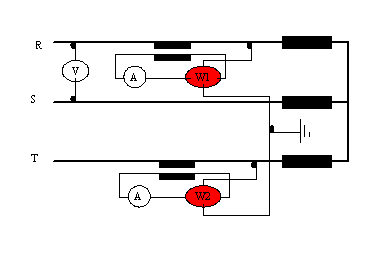- This topic has 9 replies, 1 voice, and was last updated 2 years, 11 months ago by .
-
Topic
-
Recently I participated in a generator electrical test program. Measuring of Stator winding resistance is also of the mentioned tests.
Recently I participated in a generator electrical test program. Measuring of Stator winding resistance is also of the mentioned tests.
The recommended test procedure by manufacturer to calculate winding resistance is wattmeter method. In this method, one 50HZ power supply is applied to the three phases of stator winding which is separated from other sections. In this condition electrical current of each phase ( I ) and active power consumption of three phases ( W ) are measured by suitable measuring instruments. Then resistance of each phase ( R ) is calculated as following relation:
W=w1-w2 = RI2

As you know, there are many ways to measure active power in three phase symmetrical circuits.One, two and three-wattmeter methods may be used but in this case, generator manufacturer only recommended "two-wattmeter method" and high accuracy wattmeter for this measurement.How can you explain the reasons of manufacturer choice? Why the two-wattmeter method is the best choice to reduce measurement errors in this case?
- You must be logged in to reply to this topic.
